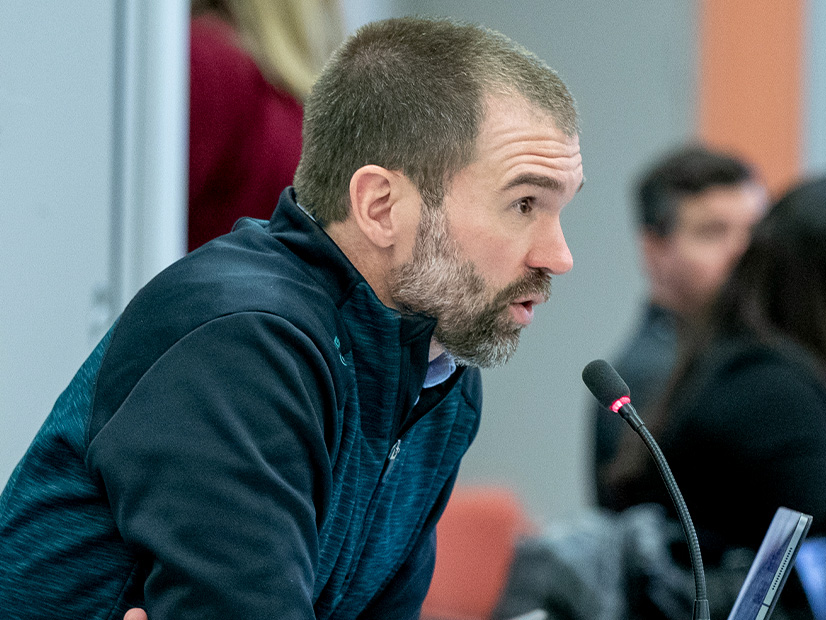PJM presented a comprehensive look at its proposal to overhaul its capacity market during the opening meeting of the third phase of the Critical Issue Fast Path (CIFP) process Wednesday.
The package contains many of the changes PJM has discussed over several previous meetings, including reworking its risk modeling; considering resources’ reliability contribution to mitigating seasonal risks when setting accreditation; and shifting the reliability metric to expected unserved energy (EUE) to capture the depth and breadth of a potential loss of load. (See PJM Presents More Detail on CIFP Proposal.)
PJM has scheduled an additional CIFP meeting for this Wednesday to continue presenting its proposal, after only getting through about half of the presentation in last week’s meeting. Stage 2 focused on putting forth design components, priorities and issues that stakeholders felt are in need of consideration. (See PJM Stakeholders Complete 2nd Phase of CIFP.)
The bulk of last week’s conversation centered on PJM’s addition of a seasonal capacity market to the proposal, continuing a slate of changes proposed in response to analysis that found that the worst reliability risks are shifting from summer load peaks to extreme winter weather.
Senior Director of Economics Walter Graf said separate winter and summer capacity products would create a more robust market in the face of uncertain risk patterns and could resolve much of the uncertainty with creating annual accreditation, procurement targets and other auction parameters.
“We think that this is the most straightforward way of reflecting in our market design the relative needs of capacity in different parts of the year … in a way that really maximizes the value of a competitive marketplace and reduces the need for administrative decision-making,” he said.
PJM is still working through the details of what a seasonal market could look like, but Graf said there’s a lot of “low-hanging fruit” in the existing market design that could be ported over and run twice a year with minimal modification needed.
Graf said PJM views this as another potential stage in the markets’ evolution, but not the final step. Long-term changes under consideration outside the CIFP process include continuing to refine accreditation; identifying how resource performance changes with ambient temperatures; and expanding the seasonal model by increasing the number of seasons or introducing monthly or hourly granularity.
“I think once you go from one season to two, it really blows open the doors to what’s possible,” Graf said.
Steve Lieberman of American Municipal Power said stakeholders have been suggesting a seasonal market for more than a year at the Resource Adequacy Senior Task Force (RASTF), which considered many of the same topics as those in the CIFP. He argued that stakeholders had favored a seasonal design with more than two seasons and that by making major changes to the market now while eyeing future changes, it may undermine investor confidence.
PJM Vice President of Market Design and Economics Adam Keech said the RTO is focused on making changes that can address its concerns within the time frame of the CIFP process. The stage 4 meeting, when stakeholders will vote on proposals, is set for August, with a goal of a FERC filing in October.
“We’re looking at what’s doable, what’s sort of the shortest path to getting the capacity market to recognize the bulk of risks in the time that we’ve got,” he said.
Graf said the largest limitation is the number of market components that could need to be changed as more far-reaching changes to the market are explored.
“The biggest constraint here is there are many inputs to a PJM auction, whether that be one season, two seasons or more, and many planning structures that go into it. … There are many dependencies and interrelationships between the capacity markets and other things related to it. … I would say this is the biggest step we can make given those dependencies and interrelationships,” he said.
James Wilson, a consultant for state consumer advocates, said he also believes an additional season would allow for pricing capacity in the offseason when the requirement is lower and there is much excess.
PJM’s Pat Bruno said resources will have to meet eligibility requirements to offer capacity for each season. While generators would typically meet the qualifications for both, he said it’s possible some might only be able to participate for one season.
Economist Roy Shanker said that if there are winterization requirements to offer capacity for that season, and it’s optional to make the investments to meet those, that essentially undermines the must-offer requirement.
Shanker said reaching an accurate accreditation for solar resources may require creating eastern and western regions in the RTO’s footprint to account for how solar panels will be performing at different times across the grid and how that interacts with the grid’s riskiest periods.
Expanding on PJM’s rationale for using a longer 50-year historical weather lookback, Graf said staff have found that they cannot estimate an accurate 10th-percentile winter with only 10 years of data.
Ryann Reagan, wholesale markets policy specialist for the New Jersey Board of Public Utilities, questioned if the new data and risk modeling built off it would capture the type of sudden temperature drop that has been credited with contributing to lost generation during the December 2022 winter storm.
Graf said that while the dataset wouldn’t explicitly capture the relationship between forced outages and ambient temperatures, as long as the historical generator performance and weather data characterize the variables implicitly, then the modeling would show those impacts.



